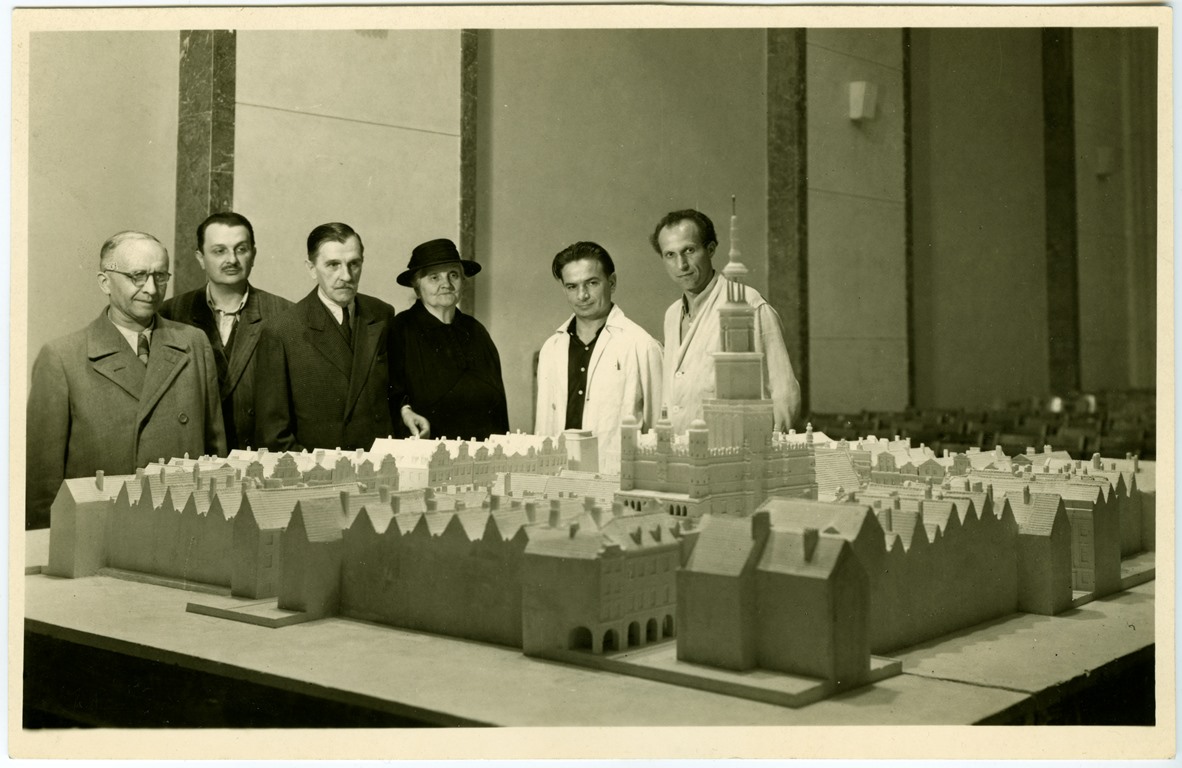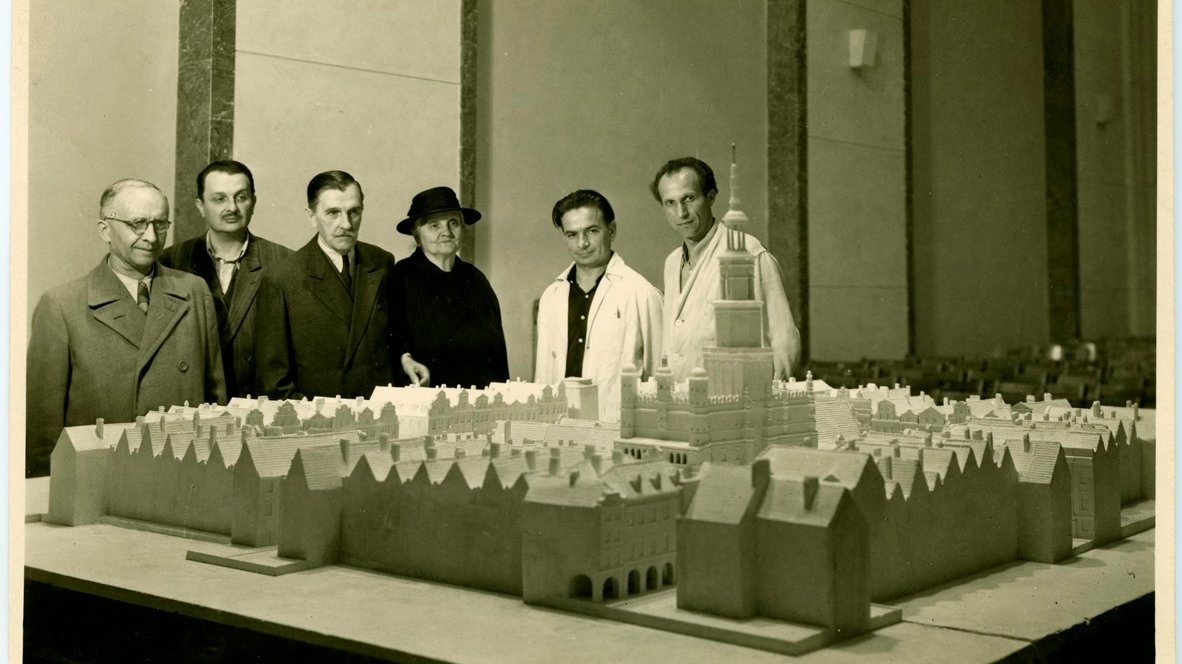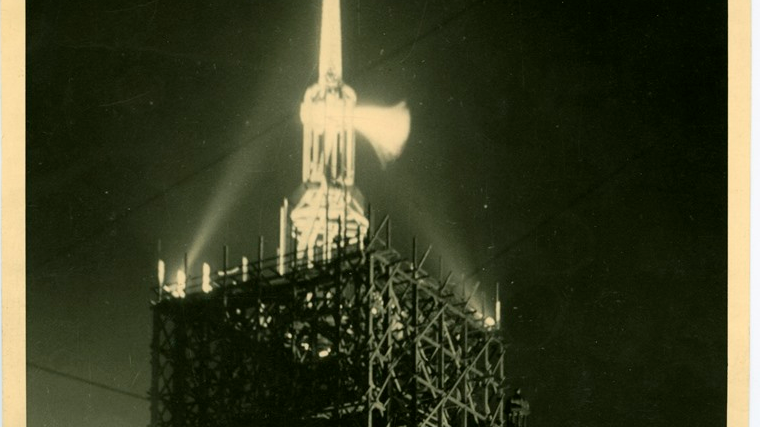Restoration... but of what kind?

The display is devoted to the post-war reconstruction of Poznań's most prominent buildings. Its other aim is to present historical debates on reconstruction among experts, decision-makers and the residents. The intention is to remind people that Poznań's architecture and urban design that emerged in the post-war era resulted from the intellectual work of numerous contributors to this monumental effort.
Poznań made it through September 1939 largely unscathed. Although the German air force did conduct a series of bombing raids, the damage they caused was minimal. Much of the American bombing of Easter 1944 was off target. Disaster did not strike until the battles of January 23 to February 23, 1945 in which Poznań was being captured by the Red Army advancing from the east. Protracted fighting took place in large institutional buildings along the so-called Stübben Ring near today's al. Niepodległości. The Soldier's House, which at the time served as the local Gestapo HQ, was fought over and passed back and forth repeatedly from one side to the other. Eventually, the fighting reduced it to rubble. A similar fate befell the buildings of the Chamber of Crafts, the Railway Authority, the Castle and the Hanka Student Dormitory. Finally, on 23 February 1945, the German defenders of the Poznań Fortress surrendered. 55% of Poznań was ravaged. Little was left of the Old Town and other historic buildings. Water supply, sewage, gas and industrial infrastructure as well as power plants were similarly ravaged. Every bridge (other than Dworcowy) collapsed. Public transport and railway facilities were severely crippled. The Old Town buildings, the Przemysł Castle and the Guardhouse were 95% destroyed. 85% of the Górka Palace and 70% of the Town Hall were also laid waste.
Unlike in the case of Warsaw and Wrocław, the sheer extent of the damage sustained by Poznań is not common knowledge. It was not until 2004 that the Poznań City Council found it vital to assess the losses incurred in the war-time fighting and during the German occupation of 1939-1945. In 2005, Poznań's mayor assigned a team of experts to the project. Their report, based largely on documentation from 1945-1947, became the first to provide the public with a detailed assessment and estimate of Poznań's war-time devastation. In 2006 zlotys, the losses exceeded PLN 10 billion! As enormous as it may sound, the amount does not reflect the full extent of the damage. Many lost works of art and archive materials, burnt book collections, looted private and state collections have never been recovered. Numerous buildings have never been restored, as is particularly evident in the Old Market Square.
A City (Re)Constructed. Post-war restoration of the stately buildings in Poznań, designed by Maksym Kempiński, Porta Posnania, until 3 May.
The exhibition is closed from March 20 until further notice
online access: The city (re)constructed Post-war restoration of the stately buildings in Poznań
translation: Krzysztof Kotkowski
© Wydawnictwo Miejskie Posnania 2020
See more

From One Celebration to Another

Christmas Markets and Fairs with Attractions

Truly Festive Vibes


